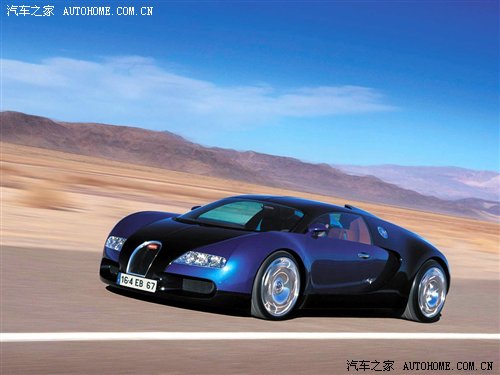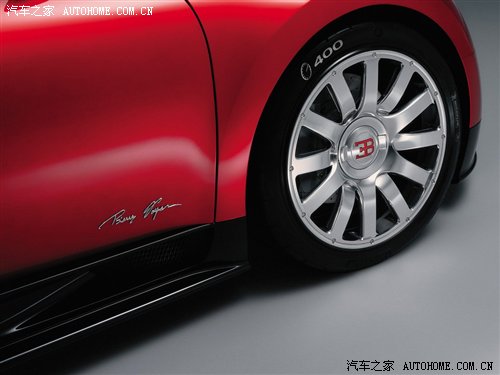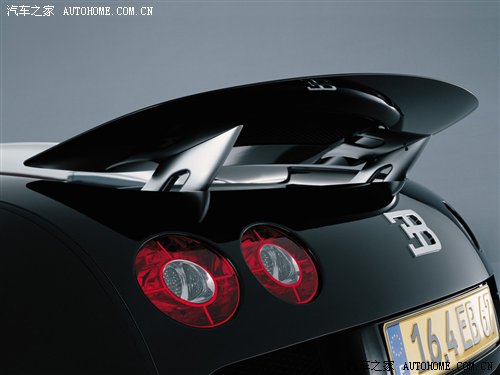Bugatti Veyron W16 is the fastest and most expensive sports car in history.
Although the car is very quiet when idling, once it starts to reach a speed of more than 100 miles per hour, you will hear the impact of tires instead of the symphony of mechanical devices, and it will not take long. We haven’t had a chance to test the acceleration yet, but we were particularly surprised by the ease with which Bugatti accelerated. We expect a complete stop time of about six seconds.

More importantly, even when the speed reaches three digits, the acceleration does not weaken. On my first drive, I accelerated the car to about 185 mph. At this time, the noise of the tires was quite loud, but the Veyron was still smooth and relaxed. One of the reasons for feeling so safe is that when it reaches 137 mph, the Bugatti will fall down, reducing the normal ride height of 4.9 inches to 3.1 inches in the front and 3.7 inches in the rear. At the same time, a small spoiler is arranged on the rear body, and the wing plate is extended by about one foot, which is improved by six degrees. At the same time, open the two bottom dampers at the front of the front tire. These configurations generate significant downforce—about 330 pounds at the front and 440 pounds at the rear at 230 mph.
Because only 500 horsepower can overcome the main resistance at 185 mph, the remaining 500 horsepower can be used for acceleration. Therefore, at 185 mph, the thrust of Veyron is equivalent to the thrust at 100 mph or 500 mph at 40 mph. It didn’t take long for me to accelerate from 185 to 230 during the second driving. The vehicle was still firmly on the ground, but the sound of the wind over the tires became very loud.
But 230 mph is the highest speed that Veyron can reach before the car is set to the top speed mode. When the car is idling, you can park by inserting the key into the lock on the left floor of the driver’s seat. This makes the automobile suspension lower until the ground clearance at the front is 2.6 inches and at the rear is 2.8 inches. These settings will also cause the front bottom damper to close and retract the rear spoiler and wing plate, but the wing plate still extends out of the car body at two degrees. These changes reduce the drag coefficient of the car from 0.41 to 0.36, and the peak downforce from 770 to 120 pounds.

Before moving on, the driver should check the field of vision after these aerodynamic changes, and check the pressure and any damage of the special Michelin PAX System Pilot Sport tire. The newly developed tire can withstand the speed of more than 250 miles per hour when the total weight of the car and passengers is 4800 pounds, and the downforce is a major technical problem of Veyron. When driving, there is relatively little attention to the tires, so it is judged that this problem has been solved.
In addition to the above aspects, there are several problems that make it difficult to achieve the highest speed driving on public roads. Once Veyron’s speed exceeds 35 mph, if the steering wheel angle exceeds 90 or touches the braking device, the configuration of the car will return to manual mode.
The reason was obvious when I first reached the top speed. When the downforce is reduced, Veyron is no longer as fast as a fast straight ball. But there will be some bending, a bit like a swift butterfly ball.
When I first drove, I almost never touched the car’s top speed controller set at 253 mph (407.5 km/h), but I used it for at least three miles in the five-mile straight runway on the second return trip. The noise made up of powertrain noise, tire noise and rushing wind must be deafening, but I didn’t notice it at all, because I’ve been driving the car in the middle of the three-lane track.
The straight road is only 32 feet wide, with low highway-style guardrails on each edge and dense jungles in the distance. One side of the straight runway extends without even the guard rail on the outside of the track, only a grassy embankment with a slope of about 20 degrees and a distance of about 30 feet from the trees. Just turn the steering wheel easily and you can leave the road and reach the Woods.
Fortunately, Veyron’s steering is very suitable for this fast driving. The center has no deceleration at all, and the steering response is soft, so it is easy to input the required precise correction to keep Veyron between the dotted lines in the center lane without over-correction. And I also know the reason why Bugatti engineers don’t want their customers to drive intermediate products at a speed of more than 200 mph and in a low-pressure mode on the expressway.

When the accelerator pedal reaches 253 mph, the aerodynamic resistance alone can slow down the Veyron by 0.3g. After driving at such a fast speed, it seems easy to suddenly drop the speed below 200. At the speed of 185 per hour, you can not only talk with your mobile phone, but also dial.
Maybe you will experience this extreme speed occasionally, which is why the powerful braking system of Veyron will come in handy sooner or later. The car is equipped with huge graphite ceramics: the front wheel is 15.7 inches with eight or four pad calipers, and the rear wheel is 15.0 inches with six pistons and two pad calipers. When the brake device is depressed at high speed, the rear wing tilts upward at an angle of 55 degrees. At 230 mph, the back pressure can be increased to 1100 pounds, and the resistance is increased by almost 2500 pounds. At this speed, an initial deceleration of almost 2.00g can be generated during an emergency stop-at least 50% more deceleration than at any speed.
After verifying the highest speed, we will show Veyron’s "starting mode", and the engine can start all four tires at the same time when it is running at full speed. Veyron can achieve a standstill to 100 km/h (62 mph) acceleration in 3 seconds. From this, we can conclude that the car can travel a quarter of a mile in 10 seconds at a speed of about 140 miles per hour, which is another record of the production car.
In the face of such a car with a price of $1.25 million, we need to think rationally. But we understand that Veyron is the fastest production car in history. We also expect it to be the fastest forever. Its appearance is extremely attractive, its workmanship is excellent, and it is full of complex and advanced automobile technology.
We have never driven a car that can obtain and maintain high speed so reliably and easily. Veyron is by no means an idle generation, and it will surely become the scene of the 18th hole of Pebble Beach Stadium in the next few decades. If we recommend a car with a price exceeding one million dollars, we will be happy to recommend the Veyron 16.4.